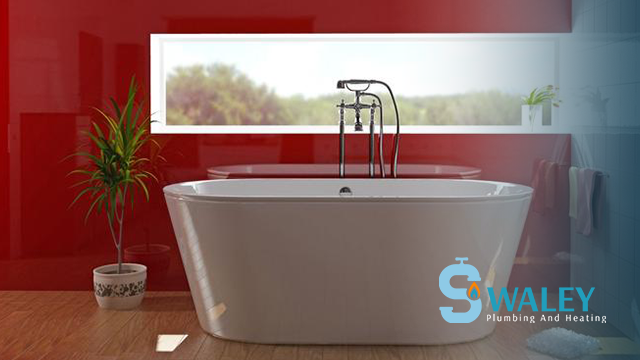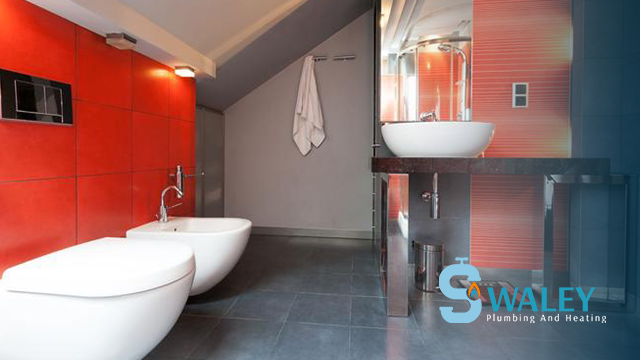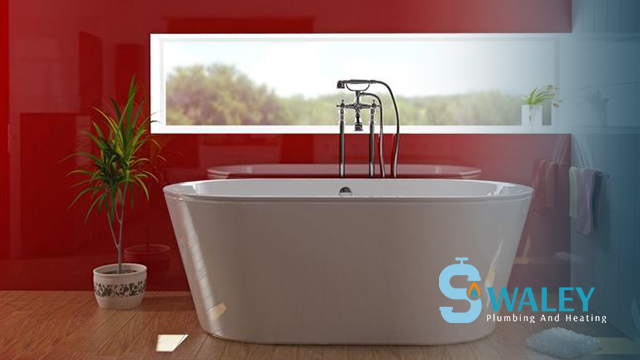What is a Wet Room? A Comprehensive Guide to This Modern Bathroom Trend
In the realm of contemporary interior design, wet rooms have been making waves as an increasingly popular choice for bathrooms. With their sleek and minimalist aesthetics, wet rooms represent a departure from traditional bathrooms. But what exactly is a wet room, and why are they becoming such a sought-after bathroom trend? In this comprehensive guide, we’ll dive deep into the world of wet rooms, exploring their benefits, components, design considerations, and more.
So, if you’re intrigued by the idea of transforming your bathroom into a stylish and functional wet room, keep reading to discover all you need to know.
Introduction
Wet rooms, in essence, are open-plan bathrooms where the shower area is integrated seamlessly with the rest of the room. Unlike conventional bathrooms, there are no shower enclosures or bathtubs to confine the water. Instead, the entire space is designed to get wet – hence the name ‘wet room.’ This modern bathroom trend is gaining popularity for various compelling reasons.
Benefits of Wet Rooms
Space Maximisation
One of the primary benefits of wet rooms is the efficient use of space. Without the need for bulky shower enclosures or bathtubs, wet rooms can make even a small bathroom feel more open and spacious.
Accessibility and Universal Design
Wet rooms are inherently more accessible, making them an excellent choice for people with mobility challenges or those looking for a universally designed bathroom. The absence of barriers like curbs or shower doors ensures easy entry and exit.
Easy Maintenance
Wet rooms are remarkably easy to clean and maintain. With fewer nooks and crannies for mould and mildew to hide, keeping the space sparkling is a breeze.
Aesthetics and Modern Appeal
Perhaps the most compelling reason to opt for a wet room is its aesthetic appeal. The minimalist design and clean lines create a modern and luxurious atmosphere that can elevate the overall look and feel of your home.
Wet Room Components
Now that we’ve explored the benefits of wet rooms, let’s take a closer look at the essential components that make up these stylish spaces.
Flooring
The flooring in a wet room plays a crucial role in preventing water damage to the underlying structure. Common flooring options include tiles, which come in various materials, sizes, and styles to suit your preferences.
Tile Options
When it comes to selecting tiles for your wet room, you’ll have a wide array of choices. Ceramic, porcelain, natural stone, and even mosaic tiles are popular options, each with its unique appeal.
Waterproofing
To ensure the longevity of your wet room, proper waterproofing is essential. This includes sealing joints, using waterproof membranes, and taking measures to protect the walls and subfloor from moisture.
Drainage Systems
Efficient drainage is critical in a wet room. A well-designed drain system ensures that water is effectively channelled away, preventing pooling and potential water damage.
Wall and Ceiling Materials
Wet room walls and ceilings should also be designed to withstand moisture. Common materials include waterproof plasterboard and waterproof paint, which help maintain the room’s integrity.
Fixtures and Accessories
Selecting the right fixtures and accessories can enhance both the functionality and aesthetics of your wet room. Consider options like rainfall showerheads, wall-mounted sinks, and stylish towel racks to complete the look.
Wet Room vs. Traditional Bathroom
Now that we’ve explored the components of a wet room, you might wonder how it compares to a traditional bathroom.
Key Differences
Shower Enclosures
In a wet room, there are no shower enclosures or curtains. The open-plan design allows water to flow freely, creating a spa-like experience.
Space Utilisation
Wet rooms excel in space utilisation. Without the constraints of a bathtub or shower enclosure, you have more freedom to configure the layout according to your preferences.
Design Flexibility
Wet rooms offer unparalleled design flexibility. Whether you prefer a contemporary, minimalist look or a more traditional aesthetic, wet rooms can accommodate various styles.
Considerations for Renovation
If you’re considering converting an existing bathroom into a wet room, there are a few important factors to keep in mind. Renovations may require changes to plumbing, flooring, and walls, so planning and budgeting are crucial steps in the process.
Designing Your Wet Room
Creating a wet room that suits your style and needs involves careful planning and consideration of various factors.
Planning and Layout
Begin by assessing the available space and determining the ideal layout for your wet room. Consider the location of fixtures, the flow of water, and how the design aligns with your vision.
Style and Themes
Wet rooms can be tailored to match your preferred style, whether it’s a contemporary, industrial, or vintage look. Select fixtures, tiles, and colours that align with your chosen theme.
Lighting Considerations
Proper lighting is essential in a wet room. Incorporate both functional and ambient lighting to create a visually appealing and well-lit space.
Ventilation
Effective ventilation is crucial to prevent moisture build-up, which can lead to issues like mould and mildew. Install proper ventilation systems to maintain a healthy environment.
Building a Wet Room
Once you’ve designed your ideal wet room, it’s time to bring your vision to life.
Hiring Professionals vs. DIY
Decide whether you’ll undertake the project yourself or hire a professional bathroom fitter. While DIY can be cost-effective, complex renovations may require the expertise of a skilled contractor.
Permits and Regulations
Before you start construction, check local building codes and obtain any necessary permits. Compliance with regulations ensures your wet room is safe and meets legal requirements.
Budgeting
Establish a realistic budget that accounts for materials, labour, and potential unexpected expenses. Proper budgeting is essential for a successful project.
Construction Process
Here’s an overview of the typical construction process:
Preparing the Subfloor
Ensure the subfloor is level and well-prepared to support the chosen flooring material.
Waterproofing
Apply waterproof membranes and seals to protect against water infiltration.
Drain Installation
Install an efficient drain system to ensure water is properly directed.
Tiling
Lay the chosen tiles, ensuring a waterproof and visually pleasing finish.
Installing Fixtures
Mount fixtures, such as sinks, toilets, and showers, according to the design plan.
Wet Room Maintenance
Once your new-look bathroom is complete, proper maintenance is essential to preserve its beauty and functionality.
Cleaning and Care
Regular cleaning is crucial to prevent the build-up of soap scum, grime, and mould. Use appropriate cleaning products and techniques to keep the space pristine.
Addressing Common Issues
Despite their advantages, wet rooms can encounter common issues that require attention.
Grout and Caulking
Periodically inspect and replace grout and caulking to prevent water leakage.
Drain Clogs
Keep drains clear to prevent blockages and water backup.
Water Damage
Promptly address any signs of water damage, such as discoloured tiles or peeling paint.




